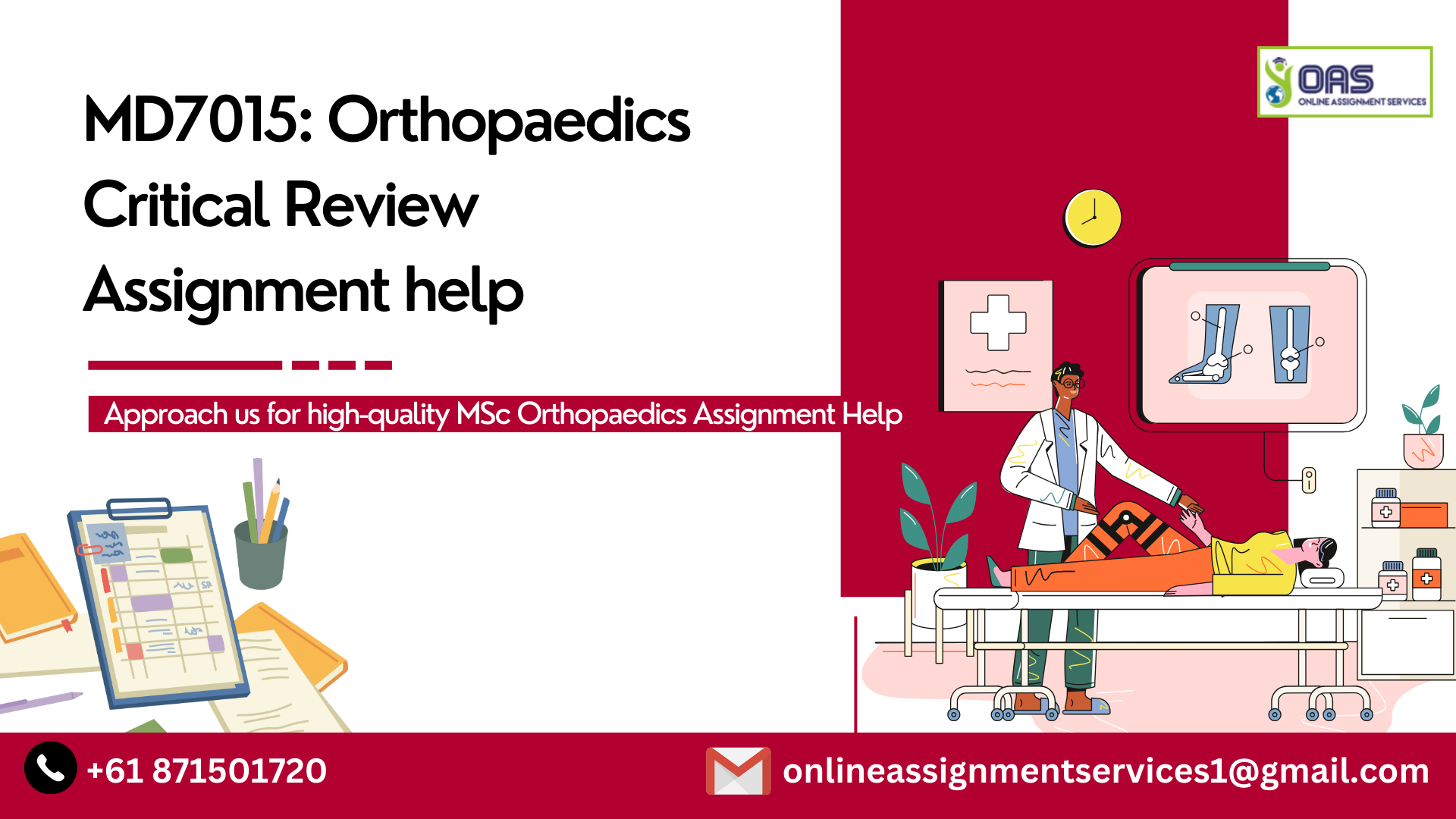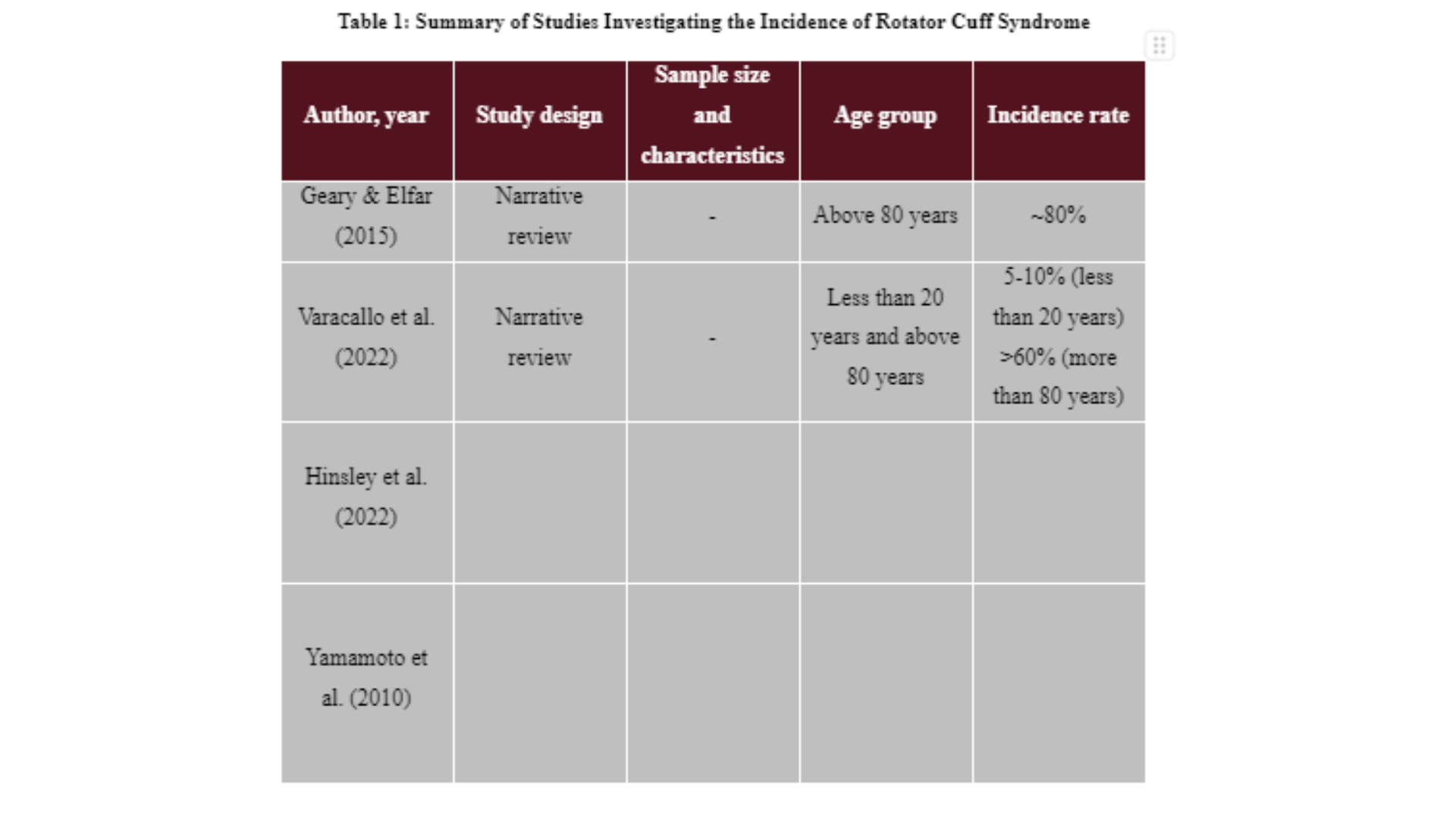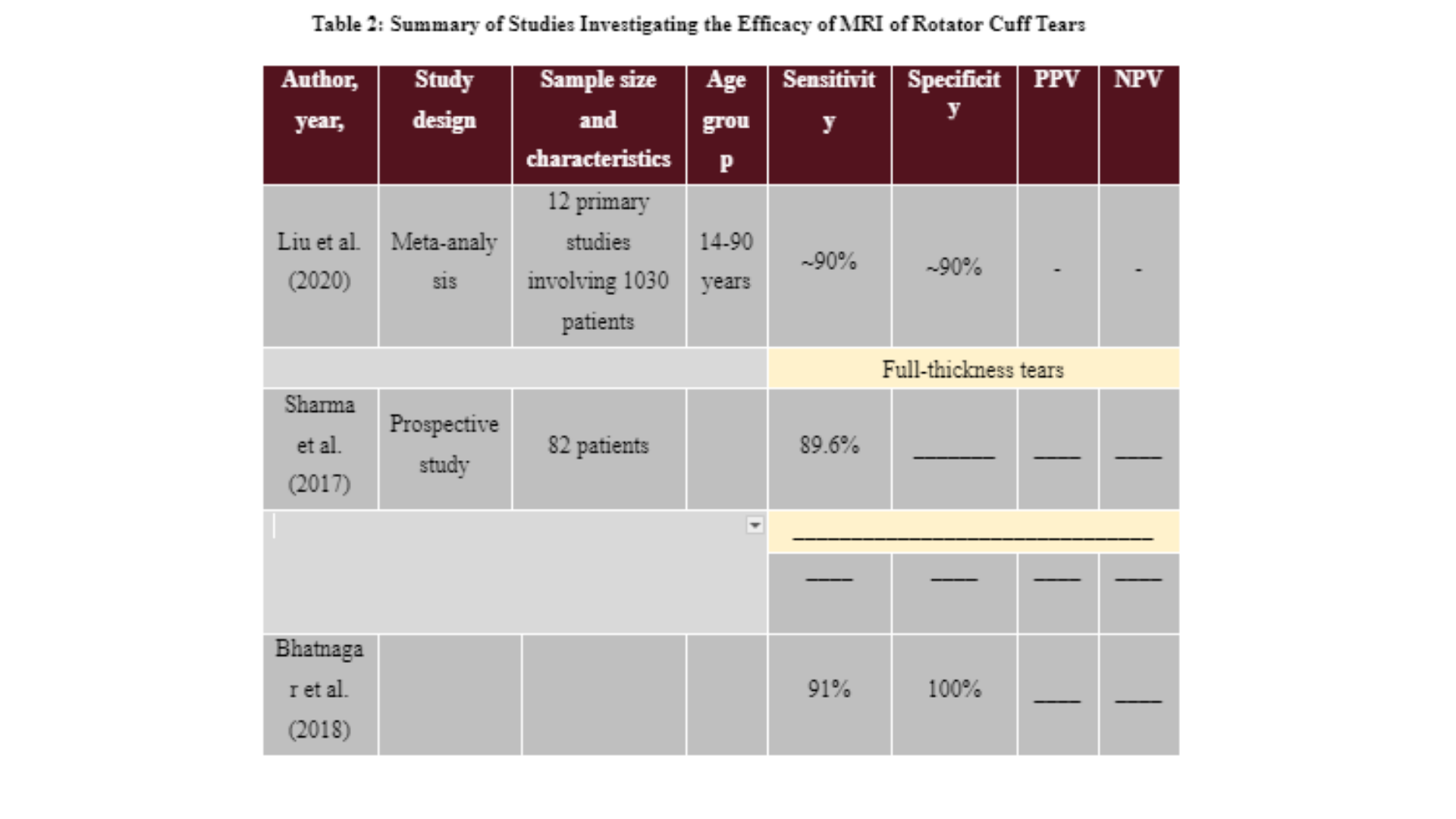MD7015: Orthopaedics Critical Review Assignment help

Question
MD7015: In this assignment for the University of Chester, UK, the students are required to utilize their critical analytical skills to evaluate their knowledge related to a chosen orthopaedic condition, and analyze the strategy used for diagnosis in this specific condition. This would demand the student to demonstrate their comprehensive learnings from the course to assess if the diagnostic strategy is suitable for the condition or not. Many students face difficulty in completing this assignment, which is why they order MSc Orthopaedics Assignment Help from OAS. Students all across the UK trust us for delivering accurate, and academically appropriate solutions in a timely manner.
Solution
It is important that such an orthopaedic condition is chosen for writing this assignment, for which evidence-based arguments can be put forth through this critical review. This would require supporting the arguments being made with credible literature sources. This is why our experts have chosen the condition of Rotator Cuff Syndrome for which the diagnostic strategy of Magnetic Resonance has been analysed in detail. As you can observe, even the choice of topic requires research and sound knowledge related to the subject, which is why our committed and meticulous subject matter experts provide the best Postgraduate Orthopaedics assignment help in the UK.
Introduction
In providing the University of Chester Assignment Help, our experts have followed the structure presented in the task file. As per this, the solution begins with a brief introduction of the chosen condition and highlighting the aim of writing this assessment.
Orthopaedic illnesses pose significant challenges in diagnosis and treatment due to the involvement of complex anatomy, overlapping symptoms, variability in presentation, and multiple contributing factors (Bhandari, 2021). As a result, diagnostic tools play an indispensable role in accurately assessing these conditions, thereby aiding in effective management strategies (Bhandari, 2021).
Buy Orthopaedics Assignment help in England from the best subject matter experts! Call us at +61 871501720.
Current knowledge of the condition
The following section outlines what is contemporarily known about the chosen orthopaedic condition- Rotator Cuff Syndrome. This further incorporates content related to the pathophysiology, clinical features and incidences in the literature evidence. Our experts provide high-quality MD7015 Orthopaedics Critical Review Assignment help by using relevant and credible sources for writing this section.
RCS is a prevalent orthopaedic condition characterized by inflammation, degeneration, or impingement of the tendons and muscles forming the rotator cuff in the shoulder joint (Varacallo et al., 2022). The rotator cuff comprises four muscles: supraspinatus, infraspinatus, teres minor, and subscapularis (Varacallo et al., 2022). These muscles, along with their associated tendons, provide stability and facilitate a wide range of shoulder movements (Varacallo et al., 2022). Recent research studies have shed light on the pathophysiological mechanisms contributing to RCS, encompassing both intrinsic and extrinsic factors. Under intrinsic factors, age-related degeneration has emerged as a significant factor in the development of RCS (Moor et al., 2014). A review article by Thankam et al. (2018) found that structural changes such as decrease and disorganization in Type 1 collagen occur naturally within aging rotator cuff tendons. This has also been supported by Jiang et al. (2021) whose primary research on mice demonstrated that structural changes, such as collagen fibre disruption, increased proteoglycan content, and decreased cellularity, were associated with natural aging process. The study also found that these age-related changes lead to decreased tensile strength, impaired tissue healing, and increased susceptibility to injury (Jiang et al., 2021). While the study conducted by Jiang et al. (2021) was a commendable endeavour involving 159 test subjects across different age groups of mice, the extrapolation of these findings to human RCS is limited due to species difference. Therefore, there exists a gap in the existing literature regarding the age-related degeneration of human rotator cuff tendons within the context of RCS, hence necessitating additional exploration into the structural alterations linked to this condition. Impaired vascularity is another intrinsic factor implicated in the pathophysiology of RCS. Asystematic review by Factor & Dale (2014) explored the role of vascular supply in the pathogenesis of rotator cuff tendinopathy. The study found that reduced blood flow and compromised oxygen and nutrient delivery to the tendon tissue have been observed in individuals with tendinopathy. Subsequently, this vascular insufficiency contributes to tissue degeneration, impaired healing response, and prolonged inflammation which are characteristically observed in this condition (Factor & Dale, 2014).

Are you looking for Postgraduate Orthopaedics assignment help in the UK? You are at the right place. Mail OAS at onlineassignmentservices1@gmail.com.

Evaluation of the diagnostic strategy
The next section analyses the diagnostic strategy employed for this condition related to the orthopaedic condition. OAS experts ensure extensively researched critical review by evaluating the effectiveness of the strategy using primary research. This is how we provide up-to-the-mark MSc Orthopaedics Assignment Help.
Several studies have demonstrated the diagnostic efficacy of MRI in detecting rotator cuff pathology. MRI has consistently shown high sensitivity and specificity in detecting fullthickness and partial-thickness tears, as well as identifying the location, size, and degree of retraction of the tears (Refaat et al., 2020). For example, Liu et al. (2020) conducted a metaanalysis involving 12 primary studies and 1030 participants. The findings of this study indicated that MRI is highly reliable for diagnosing rotator cuff tears (RCT), with a sensitivity and specificity of approximately 90%. This indicates that MRI is significantly effective in providing accurate and definitive diagnostic information for RCT. The data from this study can be considered highly reliable due to two reasons: firstly, combining data from multiple studies have resulted in an increased sample size, thus enhancing statistical power and reducing variations or outliers (Greco et al., 2013). Secondly, pooling data from multiple sources improves precision, hence reducing uncertainty and providing an accurate estimate of the true effect size (Greco et al., 2013). Likewise, Sharma et al. (2017) conducted a prospective study in India involving 78 participants with RCT. In this study, the authors found that for full-thickness tears, MRI demonstrated a sensitivity of 89.6%, specificity of 100%, positive predictive value (PPV) of 100%, and negative predictive value (NPV) of 83.3%. In the case of partial-thickness tears, MRI showed a sensitivity of 100%, specificity of 86.6%, PPV of 78.9%, and NPVof 100% (Sharma et al., 2017). The overall accuracy was 93.1% for full-thickness tears and 91.1% for partial-thickness tears. These findings further reinforce the notion that MRI is a gold standard in the diagnostic strategy for RCT. The main advantage of this study is its prospective design, which provide valuable insights into the condition by capturing data in real-time and enabling researchers to analyze the sequence of disease progression.

Get MD7015 Critical Review Assignment at flat 25% off! We are offering seasonal discounts. Grab your assignment by dropping us a text via WhatsApp at +447700174710.
Conclusion
The last section of this MD7015 Critical Review Assignment is a brief conclusion of whether this diagnostic strategy is the most appropriate method that can be used for Rotator Cuff Syndrome. We have provided a snippet of the complete Conclusion here.
This critical review has provided valuable insights into the current understanding of RCS and the role of MRI as a diagnostic tool for the condition. The current understanding of RCS includes intrinsic and extrinsic factors that contribute to its pathophysiology, such as agerelated degeneration, impaired vascularity, repetitive overhead activities, and anatomical variations. The clinical manifestations of RCS vary among patients, making it challenging to establish a standardized diagnostic approach. The symptoms include shoulder pain, limited range of motion, weakness, and clicking or popping sensations. This variability in clinical features can lead to delays in diagnosis, misdiagnosis, or the need for further investigations. Population studies have provided valuable insights into the prevalence and incidence of RCS, with rates increasing with age and higher prevalence among certain populations.
Need help with your University of Chester assignment as well? Don’t worry. Give us a call at +61 871501720 today!

